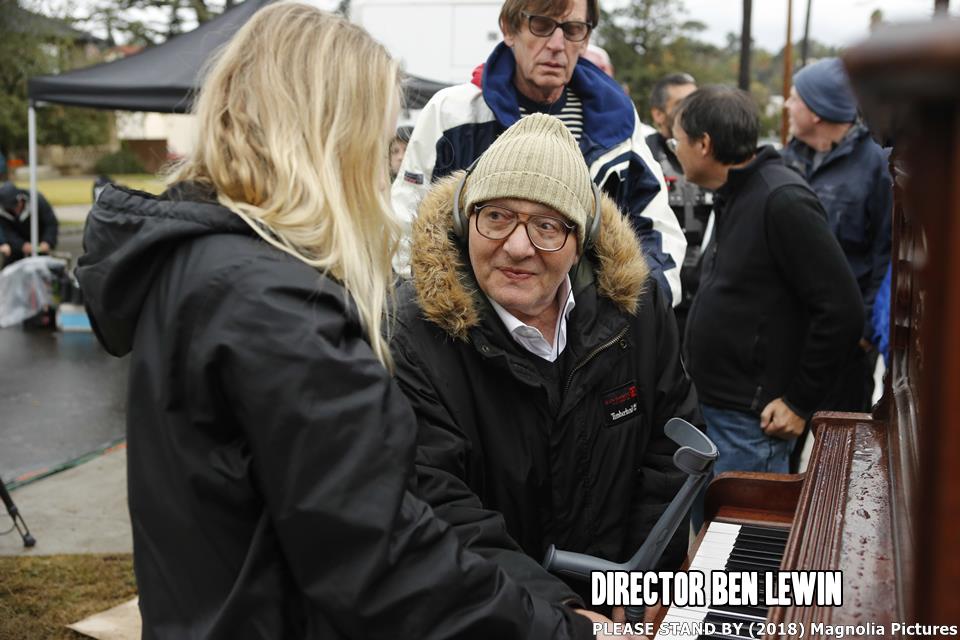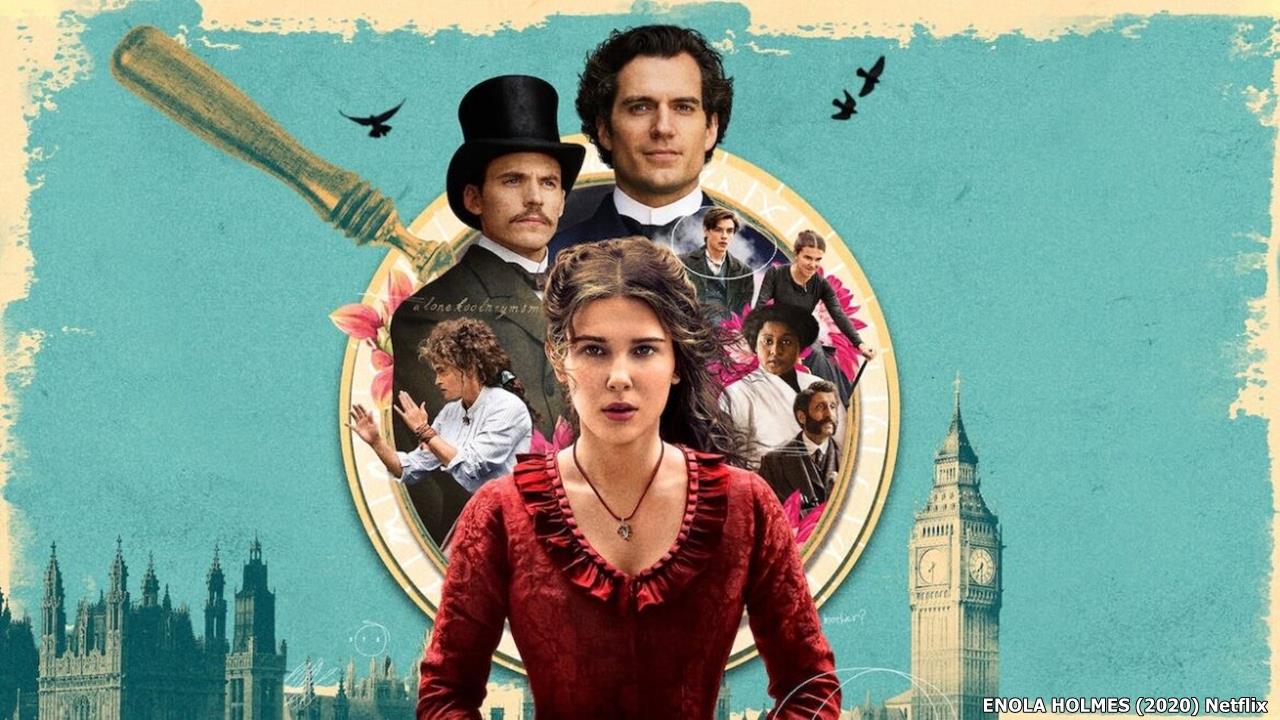PLEASE STAND BY (2018) Production Notes
“From the moment you meet Wendy you instantly fall in love with her and embrace her whimsical point of view about life and herself” --Daniel Dubiecki.
VIEW ALL
PLEASE STAND BY
PAGES
(Cast, Crew, Production Notes, Review, Photos, Articles)
ABOUT THE PRODUCTION
Writer Michael Golamco’s inspiration for Please Stand By came from a NY Times article about young girls with autism attending a summer camp. One girl in particular said her hobby was writing fan fiction along the lines of Lord of the Rings . “That girl resonated with me. The article said girls with autism have problems connecting socially, but what sets them apart from boys is that girls really want to connect. The kernel of the Wendy character started to develop – the idea of a young girl who really wants to connect with the world but isn’t sure how, and the journey of her learning how.”
Golamco began writing a 28-page one-act play. “My play had the basic characters of this film,” he explains. “It ends with Wendy going out, leaving the house with her script after a fight with her sister and dealing with Scottie. Wendy goes through the door at the end of the one act play and you never find out what happens to her. You just know she’s on a mission to deliver her script.” Michael produced the one act play and presented within a series of other one act plays in a little black box theater in L.A. People loved it. “After, people came out of the theater crying and emotional; wanting to know what happens to Wendy after she leaves,” he remembers. It got me thinking about telling that story. So I used classics like Wizard of Oz and Little Red Riding Hood as a template for a more modern fable.”
Michael learned that people with autism do want to connect. Wendy tries to connect to her caregiver, Scottie, who has taught her how to take care of herself in the real world and to her sister Audrey who she desperately wants to bring her home. Audrey must figure out how to make it all work now that her mom has passed and now with her new baby. Until then, Wendy is placed in a group home and this has driven them apart a bit. Wendy wants to prove to her sister that by getting this script into a contest, she can do things on her own and can create things of value.”
For producers Daniel Dubiecki and Lara Alameddine, the impetus for bringing Please Stand By to the screen started with their love for the script.
“From the moment you meet Wendy you instantly fall in love with her and embrace her whimsical point of view about life and herself,” says Dubiecki.
“You’re immediately attached to the idea of wanting her to succeed. So the second she’s got this journey to go on she goes, and stops at nothing to finish it. It’s a ride we take with her and it draws you in. You’re right there with her, her dog and the bus on the road -- wanting her to succeed.”
“When we read this story,” Alameddine remembers, “we both recognized how universal the story and the character of Wendy are. They represent anybody who feels challenged, who feels a bit different, or who feels like they have something they need to overcome. And it’s that relatability that resonated with us.”
Choosing a director was the next step and Ben Lewin would be brought on board. “Ben has a beautiful perspective on storytelling and on life,” says Alameddine. “He took The Sessions , which could have been very heavy and dramatic, and gave it just enough weight, while steering through in a wonderfully comedic way. That execution is what attracted us.”
Ben has lived with a disability his whole life,” she adds, “So when he looks at characters that have a version of a disability, he treats it like it’s an everyday thing and doesn’t get wrapped up in the issue. He makes it more about what’s going on inside - versus outside challenges. He is a storyteller who faces his own challenges, and I believe he uses a sense of humor in his own life to overcome a lot of that. He has a childlike mind and a whimsical way of looking at life.”
Director Ben Lewin related to the script for a variety of reasons. “One of the most compelling aspects of the script for me is that Wendy is a writer,” says Lewin. “This is a story about a writer and about a young woman confused by the rest of the world. But when it comes to her writing, she’s able to crawl into her world of comfort and fantasy where she understands everything and truly belongs.
Her story is also about her desire to connect and find an emotional anchor in a world she finds a bit confusing. This is also the story of her returning home.
I’ve been sent a number of scripts about people on the autism spectrum but this script has the most zing to it with a dynamic central character where the question of autism becomes secondary. We follow her because we love her and want her to succeed. This is a kind of Canterbury Tales. Wendy goes from point A to point B and on the way she meets bad people, good people, weird people and normal people. Her journey brings achievement and enlightenment on her search for the place where she belongs which is really a lifetime journey.”
Casting the lead role of Wendy would be the single most crucial thing the team would need to do. The loveable and complex character embodies a number of layers with autism at the bottom of the surface. They would need an actress who would add those layers to avoid a one-dimensional character with focus on her disability and being different. Dakota Fanning was the first person the team honed in on. “We wanted someone relatable and completely accessible who wasn’t going to beat down the character with a heavy hand; someone that could sort of dance and bring lightness to her” says Dubiecki. “Dakota Fanning embodied all of those things.”
“When I read the script I knew this story was special,” says Fanning, “I didn’t want anyone else to do it. I had to be the one to bring Wendy to life. It was something that kind of scared me and made me feel challenged in a way that I hadn’t been challenged before. They always say to do the things that make you feel a little fearful and I had to listen to that.”
From there, Fanning would do a fair amount of research into Wendy’s autism but was careful to leave room for her own interpretations. “I didn’t want to go too far into researching autism,” says the actress. “I talked with Ben and met some young people with autism, but I didn’t want to do an impression of someone with autism so I needed to kind of go it alone and create my own version of Wendy. Some of the moments in the film that became ‘Wendy moments’ come from my own heightened anxieties or insecurities, like the moment in the train station with Wendy trying to find money to pay for the ticket. Every time I pay for something at a register I feel so much anxiety to get my change back and put it in my wallet before the person gets annoyed with me. So I took things like that and heightened them a bit.” “When we meet Wendy she is at a bit of a crossroads in her life,” Fanning continues. “Her sister has a baby and she’s feeling a little left out and isolated. We see her love for Star Trek and entering this contest could be her way of ultimately going home. That really stays her goal throughout the film. Her Star Trek fantasy is her way of connecting to reality. It’s how she connects with her emotions and how she sees the world. She filters everyday life through Star Trek fantasies.”
With Dakota Fanning on board, the important role of Audrey would be cast with Alice Eve. As Wendy’s caregiver, Audrey’s story would shed light on lives affected by a family member having additional needs. “Audrey has put her own life on hold for many years,” explains Daniel Dubiecki. “She feels trapped, and with Wendy in a group home, she pulls her life together for the first time but is faced with a difficult decision about Wendy’s future.” “As important as it is to tell the story from Wendy’s point of view, Audrey’s story is equally as important,” adds Lara Alemaddine. “Through Audrey’s eyes, we see how family members deal with this challenge. Wendy exhibits sensory overload, which is a typical symptom of autism. Alice Eve brought sensitivity to Audrey; allowing us to empathize with her instead of feeling like she was being selfish for wanting her life back.”
“I have a grandma with Alzheimer’s,” says Alice Eve. “She is in a home and every time someone goes to see her she asks if she can go home with them. In a situation like Wendy and Audrey are in, I believe the unsung hero is the caregiver but that is because that is where I have aligned my sympathies as an actress. Audrey’s struggle is real and I sympathize with it. I would like the audience to take away an understanding of the struggle of the caregiver. It is real, and Audrey’s struggle is to find balance in her life while trying to care for the person that isn’t able to find her own balance. It’s a real conundrum because Wendy has outbursts that get violent and Audrey is concerned for her new baby. Audrey feels choice-less about her sister’s care. She loves Wendy, but recognizes that caring for her daily is taking too much out of her and making it impossible to give Wendy everything she needs.”
“Audrey is being put to the test,” adds Ben Lewin. “She has had the burden / blessing of growing up with a special needs sibling and she’s afraid Wendy is not going to fit into that idea of life that she now has with a new baby and husband. She is torn between that loyalty to someone she’s grown up with and the desire to have a life of her own and protect her child. I grew up as a special needs child. I had an older brother and he never treated me any differently, but I was the focus of the family attention and he had to just go with the plan rather than have his own place in the family. So I feel for that situation where an older sibling has to be more than just a sibling.”
The next important role of Wendy’s psychologist, Scottie, would be filled with actress Toni Collette. “We knew Toni would bring balance to the issues that plague her character’s world both at home and at work,” says Daniel Dubiecki. “Toni is smart, warm and has an edge and toughness to her that brings so many layers to her characters,” Lara Alameddine adds. “Scottie has to hold it all together despite some of those layers crumbling. She is a single mother of a teenage boy, and embodies strength and empathy while staying grounded and principled in her work and home life.”
“Scottie is a bit robotic in her home life and finds it easy to lean into work because of the safety of it not being her actual family,” says Colette. “At home, her son Sam confronts her at every turn and makes her feel like a failure. She’s a problem solver; but she can’t solve Sam’s issues or make his fatherless life any better. At work, Scottie has made huge strides with Wendy. She sees how brilliant and special Wendy is and wants Wendy’s family to see that too. It is easier for Scottie to be open with people at work because there is an actual structure which allows closeness without much intimacy.”
“Wendy escapes and when that happens, Sam and Scottie unite and go on a mission together for the first time in ages, she adds. “Through their journey to find Wendy, Sam and Scottie bond again. Sam’s young perspective on Wendy and her writing allows Scottie to understand her more and that is where her real insight comes. Scottie begins to admire her son for the first time in a long time and that opens things up for them, allowing them to truly see each other again.”
“The work of a therapist is hard work and oftentimes thankless,” adds Ben Lewin. “You’ve got to find your little victories here and there and through Wendy, Scottie finds a victory. Toni Colette brings a sense of compassion, empathy and respect to Scottie. She brings a motherly strength and humanity to her role rather than a sense of ‘I’m the expert, listen to me.’
River Alexander would bring the role of Sam to life. As a teenager struggling with finding his way into adulthood, the character of Sam would need to embody layers of angst, hurt, isolation, and insightfulness. “When I saw River’s audition I knew we had found our Sam,” says director Ben Lewin. “His audition was so distinctive. He wasn’t trying to imitate anything or anyone and was using his own personality to step into someone else’s personality. He wasn’t faking it. There was a real likeability about him and it felt authentic.”
“When I first talked to Ben Lewin about Sam he said something that affected the way I would play Sam,” says River. “Sam is rebelling because he doesn’t feel like he’s getting enough or as much attention from his mom as she’s giving to Wendy. He starts taking drugs and isolating himself, but despite all of that, he isn’t a shallow character. He said Sam brings everyone together; including him and his mom. It was helpful having him tell me to go deeper and not make him selfish. Sam can decode Wendy’s Klingon language and that provides a pivotal piece to the puzzle because his mom doesn’t. He ultimately provides the bridge between Scottie and Sam and Scottie and Wendy.”
“There were so many moments during filming when we sat on the set and just got chills over someone’s performance,” concludes Dubiecki and Alameddine. “One in particular will be forever etched in our minds: The entire script builds to this one moment in the story when Wendy gets to where she needs to be, and asks to just be given a chance like everyone else. When Dakota said that line there was silence on the entire set. You could hear a pin drop and it was so emotional. I remember looking at Ben and I could hear him take a deep breath. And the take was over. He just went over to her and gave her a big hug because it was such a special moment. Wendy had completed her journey. In that one moment you could tell every single person on set realized we were making something very special.”
“It’s been remarkable to watch these talented actors bring my script to life,” adds screenwriter Michael Golamco. “They have all brought such senses of accessibility and realness to their characters; making them anyone’s child, sister, mother or friend.”
“I remember leaving the cinema after seeing a movie and the audience was still hanging around afterwards talking about the movie,” adds Lewin. “I thought ‘wow, you don’t see that often, normally the audience just piles out of the theater and goes home.’ But this was a kind of afterglow. And that’s what I want, really. I want people to talk about the movie after it is done; the next day, the week following. I don’t want it to be one of these movies you walk out of and don’t remember what it was about. Or you want to forget it. I want Please Stand By to be memorable.”
VIEW ALL
PLEASE STAND BY
PAGES
(Cast, Crew, Production Notes, Review, Photos, Articles)



